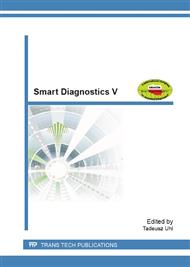p.101
p.109
p.117
p.127
p.134
p.140
p.149
p.157
p.166
Identification of the Water-Cooled Fuel Injectors for Engines
Abstract:
The fuel injector acts a double role: it is the valve of the pump supplying fuel to the combustion chamber and the device spraying a supplied dose. As the valve it may operate as a self-opening or self-closing valve, depending on the pressure produced by the fuel pump, or the valve controlled by external signals. Techniques and diagnosis methods for fuel injectors depend on a fuel injectors control system and construction details. For practical reasons the fuel injector is a sectional valve with a separated component called atomizer. Atomizers must be cooled. It is possible to cool with fuel or with external water-or oil-cooling system. In case of liquid-cooled fuel injectors, apart from malfunctions causes known from literature, decrease of the cooling efficiency may appear, as the effect of the penetration of fuel from injector to the cooling system of injector. There are no reports concerning detectability of fuel leakage into cooling liquid with known techniques and diagnosis methods of injection systems and fuel injectors. In the article there will be presented as follows: a connection of the atomizer and injector body as the place of fuel leakage into the cooling system, reasons for loss of leak tightness in connection of atomizer with the body of atomizer and methods applicable for the leak tightness analysis, mechanisms of injectors malfunction caused by the loss of leak tightness. The analysis of applied and possible methods of injectors diagnosis in the aspect of identification of said leakiness will be carried out.
Info:
Periodical:
Pages:
134-139
Citation:
Online since:
October 2013
Authors:
Price:
Сopyright:
© 2014 Trans Tech Publications Ltd. All Rights Reserved
Share:
Citation:


